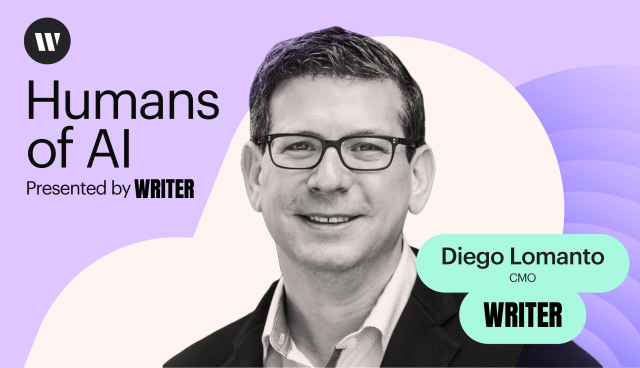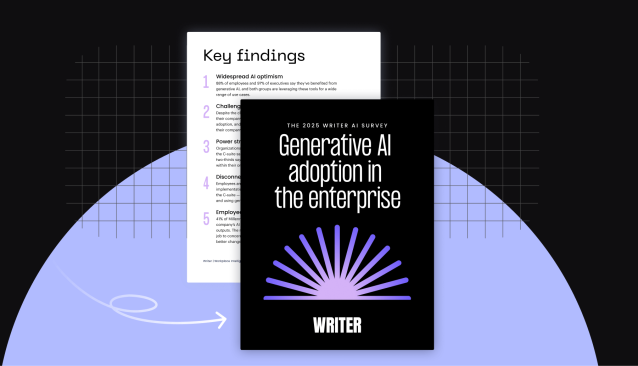Enterprise transformation
– 8 min read
A correction is coming to the AI market. Are you ready?
The era of experimentation is ending. Here’s what separates the initiatives that survive from the 40% that get canceled

I’ve been in tech long enough to recognize the pattern. We saw it with the dot-com boom and bust, and we’re seeing it again with AI. Enterprises are moving from high investment in pilots and experiments towards more cautious investment tied to ROI they can measure.
- The current slowdown in AI investment is a predictable turning point, marking a shift from the Installation Period to the Deployment Period.
- Enterprises face challenges in AI adoption: lack of clear ROI, security controls, and employee buy in.
- To succeed, companies should focus on articulating clear business value and risk controls for AI projects.
- Successful AI adoption requires a people-first approach — aligning talent, training, and trust with investments.
The technological transformation underway isn’t going to stop. Gartner projects agentic AI spending will grow from $84 billion in 2024 to $512 billion by 20291. But — and this is the critical part — they also predict over 40% of agentic AI projects will get canceled by the end of 20272. If that prediction plays out, what we’ll see won’t be a collapse but a correction — a drawdown that separates the builders from the experimenters.
I keep a copy of Carlota Perez’s “Technological Revolutions and Financial Capital” on my desk for this very reason. She masterfully mapped the lifecycle of every major technology deployment — a frenzied installation phase of experimentation, followed by a bubble and a correction, which then ushers in a golden age of real, sustainable deployment.
In her book, Perez argues that technological revolutions aren’t smooth. They follow a predictable pattern driven by the tension between financial capital (speculators) and production capital (builders). Each cycle starts with a frenzied “Installation Period,” where investment creates a speculative bubble. Feel familiar?
Perez frames the inevitable crash of this bubble not as a failure, but as a crucial “turning point.” This correction shifts the market from the turbulent installation phase to the “Deployment Period,” or “golden age,” where the mature technology is integrated across the economy, leading to stable growth and real transformation. The correction, therefore, is the necessary event that moves the focus from hype to sustainable value.
At our recently held AI Leader’s Forum in San Francisco, where I walked through Carolta’s framework, I was followed by example after example of real-world value that WRITER customers are achieving with AI. So this time we may be entering the transition phase with more strength. Ben Thompson wrote it about as well in his recent article, The Benefits of Bubbles.
I’ve spent the past year talking to leading CMOs about how they’re approaching AI transformation. They’re facing what I call the “AI acceleration challenge” — the gap between strategic ambition and execution velocity. They need both speed and custom fit, and they’re realizing that the scattered experiments of the past two years won’t survive 2026 budget reviews.
I don’t believe we’re headed for a bubble that will burst the same way the internet mania did in 2000. But make no mistake, a correction is coming. The question is — how are you positioned for it?
The forces driving this change
In Perez’s terms, this is the moment the tension between speculative financial capital and grounded production capital comes to a head. She sees a trio of key factors at work here. If you’re not seeing these forces in your own organization yet, you will soon.
The ROI problem
Fewer than one-third of AI decision makers can actually tie AI value to P&L changes. 3As an industry, we’ve spent 18 months running pilots, buying point solutions, and celebrating productivity wins. But when the CFO asks, “What’s the business impact?” — most teams go silent.
Forrester predicts that enterprises will delay 25% of their AI spend into 2027 because they can’t justify it financially. 44The analysts are being diplomatic. What they mean is — finance-gated decisions will decimate proofs of concept.
Workers got better tools, but workflows didn’t change. This is a classic symptom of the late Installation Period — focusing on individual task augmentation instead of enterprise productivity, which is where true value is unlocked in the Deployment Period.
The infrastructure reality
Security, data governance, and integration are the top challenges enterprises face in scaling AI agents. This is the hangover from the chaotic build-out of the Installation Period.
Companies built dozens of point solutions without thinking about the platform. Shadow AI proliferated. Now, IT and security teams — the stewards of production capital — are playing catch-up, trying to impose controls on systems that weren’t built for enterprise governance. Before the golden age can begin, we must pay this infrastructure debt down.
The trust gap
The final piece of the puzzle is the growing gap between innovation and adoption. A recent Wharton study on AI adoption in the enterprise highlighted this gap. As they wrote:
“Leadership commitment is growing, with C-suite ownership rising. However, people and processes are the new constraint. Training budgets and confidence in training are slipping, and advanced talent is hard to hire. Most leaders view Gen AI as skill-enhancing, yet culture and workforce shifts (including uncertainty about hiring in the next few years) could slow momentum. Those pulling ahead are aligning talent, training, and trust with their investments.”
This is the human side of the turning point. A technology cannot be truly “deployed” if the people who use it don’t trust it or see its value. Those pulling ahead, as the study notes, are the ones aligning talent, training, and trust with their investments — laying the cultural groundwork for the Deployment Period.
A recipe for survival and success
During the dot-com boom, the bust — Perez’s “turning point” — separated real businesses from vaporware. That wasn’t the end — it was the beginning of the real internet economy.
Hopefully, this build-out won’t get so far ahead of itself, and we’ll see a correction, not a collapse. The experimentation phase teaches us what’s possible. The correction will teach us what’s sustainable. Here’s my advice on how to weather the coming storm.
ROI
Most agentic AI pilots are failing not because the technology doesn’t work, but because teams can’t articulate clear business value.
Our campaign agents take a major project, like a 60-page research report, and turn that into blog posts, email campaigns, social posts, webinar scripts, and landing pages. This work used to take an entire team weeks and can now be done by a single marketer in minutes, with a few hours dedicated afterward to fact-check and polish the output.
When you move away from the personal productivity gains individuals get working with a chatbot and start reimaging entire workflows with agents, it becomes far easier to identify and quantify the real impact AI can have on your business.
Infrastructure
Build on platforms, not from scratch. Rolling out your own AI agent system is too expensive and slow for most organizations. Start with prebuilt agents — at WRITER, we’ve got 100+ in our agent library. Use no-code builders for business teams to prototype. Enable IT engineers to extend and refine with code when needed. Leverage vendor training to upskill teams faster than you could build capability internally.
I’ve seen marketing teams launch with prebuilt agents, have IT customize for enterprise workflows, and show ROI in 60 days instead of a six-month build cycle. The correction rewards speed and proven solutions over reinventing the wheel.
Trust
The Wharton study hit on something crucial — you can’t impose AI transformation on an organization. You have to build it with them.
Here’s what works: Start with your champions, not your skeptics. Find the teams already experimenting — they’re usually in content, customer success, or data analytics — and turn their wins into organizational proof points. When a content manager can show how they launched a campaign in two days instead of two weeks, that story travels faster than any mandate from the C-suite.
I tell our team that AI scales execution, but brand and humanity scale connection. The companies that survive the correction won’t be the ones with the most AI tools. They’ll be the ones who use AI to amplify what makes them uniquely human — their perspective, their values, their relationship with customers.
The pattern is clear
As Carlota Perez’s work so brilliantly illustrates, we are right on schedule. We’ve lived through the frenzied Installation Period and are now entering the turning point — the correction.
The 40% of projects that get canceled will be the relics of that initial phase — the ones that never moved beyond experimentation, never connected to real workflows, and never earned organizational trust. The 60% that survive will become the foundation for the Deployment Period — the next decade of business transformation.
Here’s my advice — Stop thinking about AI as a technology project. Start thinking about it as organizational evolution. The correction isn’t something to fear — it’s the market’s way of separating signal from noise.
If you’re still running scattered pilots, consolidate around platforms. If you’re measuring individual productivity, shift to workflow transformation. If you’re keeping AI in IT, bring it to the business teams who’ll actually use it.
The companies that treated the internet as a toy in 1999 aren’t here anymore. The ones that saw it as infrastructure for a new way of working built the economy we live in today.
AI’s correction is coming. What’s your plan?



